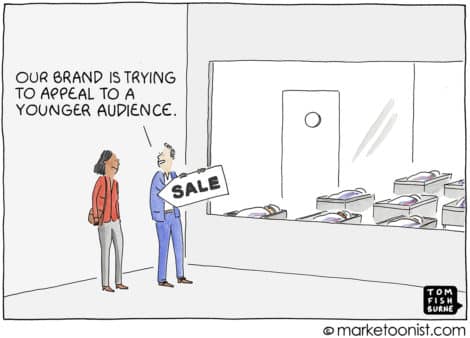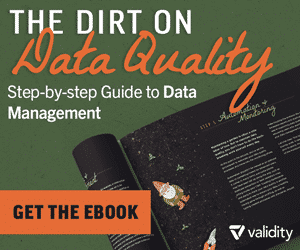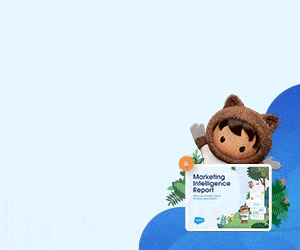Good morning, Marketer. When buyers are moving along on their journey, they want the wheel in their hands. In today’s newsletter, we look at the frustrations many buyers have with their buying experiences. Much of it has to do with marketing and sales overreach, especially in B2B. Sometimes less is more. The only way to know for sure is to have good customer data across functions. Too many silos can lead to greater frustration. Further down, we see how the same data obstacles can also lead to internal confusion, in sales forecasting specifically. Sure, the pandemic has been an unexpected challenge to revenue, but all the more reason to champion organizational and technological change. But first, we have a fascinating case study. When Facebook ads got too expensive, Chicago-based Tovala turned to performance-driven CTV spots to promote their delivered meal kits. The result is an update to that classic American staple, the TV dinner. Chris Wood,
Editor |
|
| | | Performance | | | | | How performance CTV ads are helping Tovala sell meals that cook themselves | | Like many pandemic-inspired consumer dining trends, the meal kit delivery services (MKDS) market has seen tremendous growth over the past year. That growth has been fueled by limited dining out options combined with consumers’ desire for healthy convenient meals. One of those services, Chicago-based Tovala, is offering meal kit delivery with an interesting twist. Meal delivery services come in two flavors – Heat & Eat or Cook & Eat. The former refers to prepared, fully-cooked meals which are delivered to your door and don’t require cooking beyond warming up the food. Tovala combines the Heat & Eat approach with the Cook & Eat approach via the use of a smart oven that enables customers to create home-cooked meals requiring minimal prep in roughly 20 minutes or less. Tovala credits Facebook ads for helping scale their initial audience and raising brand awareness. But the rising cost of Facebook ads led them to diversify their channel mix.Tovala worked with MNTN, a CTV performance marketing platform, to quickly get up and running with a CTV pilot campaign. MNTN is a self-serve ad management platform akin to Facebook or Google Ads, but with a focus on direct TV advertising. Campaigns are highly data-driven and optimized over time based on performance. Tovala wanted to test CTV because they were looking for a medium that helped them reach new audiences and they found that it delivered — in spades. Ad delivery costs like CPM were lower than on other platforms and overall acquisition costs were up to 60% more effective. Read more here. |
|
| | | | How SEO forecasting can help you get the right clients | | Whenever your SEO agency receives a new inquiry, you analyze the potential that lead has in terms of SEO growth. It’s a resource-intensive and uncertain process. As your team juggles with all the necessary inputs to gauge the viability of the lead’s SEO objective, you may also evaluate if it’s the right fit for your agency’s DNA. And that’s where a realistic forecasting methodology becomes a competitive advantage. Read More » |
|
| | | Management | | | | | SaaS buyers: The process is frustrating | | Over 90% of B2B buyers want to communicate about and negotiate offers, while almost 80% are frustrated by the B2B purchasing experience. That’s according to a new report from Qwilr, the proposal and quote design solution for B2B sales. “SaaS Buyer Experience 2021” questioned 114 U.S.-based respondents, almost a third of whom work in the technology/software sector. Frustration was based around excessive paperwork and too many calls or meetings with sales reps. The buying experience is complicated and has too many steps (35%), and takes too long (26%). No fewer than 59% of respondents called for faster, easier processes. Against that background, it’s no surprise that there’s support for self-service options with reduced sales involvement (25%) and that a healthy proportion wants to be able to conduct demos themselves or try the product for free (40%) and wants to do their own research and product comparisons (over 30%). Peer reviews come in only second to cost when it comes to influence on final purchase decision. The report concludes: “Buyer conveniences can accelerate the deal.” Why we care. One takeaway from reports like this has to be that the pandemic got sales reps out of customers’ hair. Perhaps that’s not a kind reflection on sales, but it’s clear that the trend towards purchasers conducting their own research and (where available) trials has only accelerated. And after 15 months of doing research and discovery, and making consumer purchases online, why grapple with a much more complicated process when it comes to B2B? Of course, it might be said that a multi-thousand dollar software investment is bound to have some complexity to it. But that doesn’t mean it isn’t incumbent on vendors to smooth the path as much as possible. It is notable that it’s still less than half of purchasers who want to avoid sales-conducted demos and enjoy a self-service process: but there’s little doubt that those numbers will grow. |
|
| | | | MarTech 2021 Guide to Enterprise Identity Resolution Platforms | | Identity resolution – the science of connecting the growing volume of consumer identifiers to one individual as he or she interacts across channels and devices – has become critical to marketing success, as well as essential for compliance with consumer privacy laws. This guide from MarTech explains the benefits of identity resolution software, and examines the market, latest trends, opportunities and challenges. It also includes profiles of 10 leading identity resoluton platform vendors, pricing information, capabilities comparisons and recommended steps for evaluating and purchasing. Learn more » |
|
| | | Transformation | | | | | Common struggles for revenue leaders | | Only 15% of revenue leaders are very satisfied with their forecasting process, according to a recent Benchmark Study by revenue intelligence provider InsightSquared. And even worse, a full 91% of respondents said their predicted forecast was off by 6% or more. Certainly, the pandemic affected forecasts in a dramatic way, which is all the more reason to look hard at the kinds of tools companies can implement, as well as other steps they can take to improve forecasting. CRMs. 80% of respondents were using two or more forecasting platforms, and over half were using three or more. CRMs are the top tool for forecasting automation. However, less than a third said they used CRMs for opportunity scoring, an important forecasting metric. Automation. Over half the companies surveyed didn’t have forecasting automation. This makes organizations more susceptible to human error and bad data when everything is manually inputted into an Excel spreadsheet. Involving sales reps. Since they’re closest to the deals, sales reps need to be brought into the forecasting process. But only a quarter of businesses surveyed said this was the case in their org. Why we care. When organizations use a number of different tools for a single operation, as in the case of forecasting platforms, this requires an even greater amount of human attention and buy-in. It’s easy to see how morale could be affected and how revenue opportunities could be lost. The consequences for siloed data and a bumpy digital transformation are many, not least of all dropped sales. It appears from this survey that those responsible for driving revenue (which increasingly includes marketers) need to have a thumb on the pulse of their company’s stack. The business’s forecasting could offer a sign that greater changes need to be made in marketing or sales. |
|
| | | | This time next week: SMX Advanced! | | Join us online, next Tuesday and Wednesday (June 15-16), to explore cutting-edge SEO, PPC, and user experience topics and trends… everything from tech SEO tactics for improved visibility to a deep dive through Google Search Console Performance and Experience reports. Don’t miss this exclusive, experts-only training event! Register for just $249 » |
|
| | | Data | | | | | Targeting younger audiences: Marketoon of the week |  “ “
It’s no secret that as Gen Zers reach adulthood, marketers are already eyeing their successors, Generation Alpha. Where does it end? This week’s Marketoon throws a ridiculous light on the tendency to target younger and younger audiences. Fishburne’s take: Epoch Strategy Director Alex Murrell wrote a fascinating piece a couple of years ago on “The Ageism in Advertising” and the knee-jerk way that marketers obsess over younger generations. Alex cited that only 5% of advertising spend is targeted to adults aged 35-64, despite the fact that over 50s hold 80% of the wealth (in the UK), make up 60% of car sales, 58% of travel spending, 50% of health and beauty sales, and 49% of all FMCG sales. Why we care. Marketers should never leave behind their core audience in an attempt to beat their competition to the punch. What we know about Gen Z, however, is that they influence the buying decisions and behaviors of older consumers they live with. Long before Generation Alpha gets their first job and buys their first home, they will have left their mark in the marketing world. |
|
|
|



 “
“